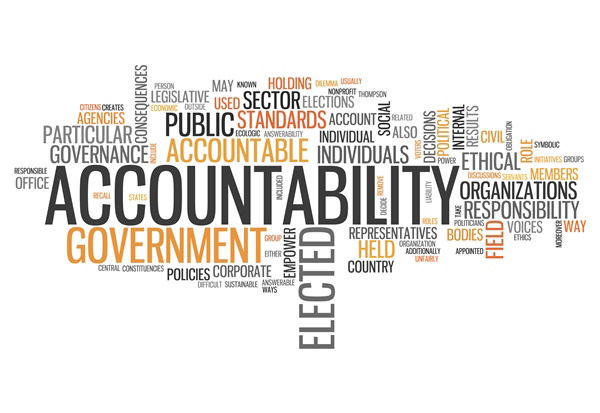
An opulent city lay at my mercy, its richest bankers bid against each other for my smiles; I walked through vaults which were thrown open to me alone, piled on either hand with gold and jewels. By God Mr Chairman, at this moment, I stand astonished at my own moderation – Major General Robert Clive
The rulers of the subcontinent that followed him were not as modest or candid as Lord Clive, who had himself been called ‘recklessly generous, profuse, moody, and unable to endure even himself’. He did not know that such a hearty and eloquent defense of corruption would not be needed two centuries later, when even a lone necklace would not be able to survive the avid gaze of the rulers. Lord Clive did not know that the dominions he founded would not have a Parliament like the one that asked questions about the East India Company’s corruption in 1772. The legislatures of the future would be known for their indifference, and at times deference, to corruption.
The British rule in the subcontinent did not see any more scandals of the magnitude of Lord Clive’s. It was not that the transfer of power from the company to the crown suddenly purified the Englishmen descending from Her Majesty’s ships. The order that followed the events of 1857 allowed a functional bureaucracy, which was the main tool of the crown in the absence of a political machinery. The Indian Civil Service, which Nehru famously called ‘neither Indian nor Civil, nor even a Service’, enabled a hands-on administrative structure suited to the colonizers.
Corruption in India was understandably not a primary concern for the British, despite anti-corruption legislation in the UK, such as the Public Bodies Corrupt Practices Act of 1889, and later statutes in 1906 and 1916. The colonizers did not care much that lands were granted as favors, and stipends were given to the favorite, as long as it did not have any adverse effect on the writ of the Empire. An offence of ‘illegal gratification’ was listed in the Penal Code, but was rarely invoked against public servants who enjoyed considerable immunity. Even the gradual transfer of power to the natives did not necessitate any special anti-corruption arrangement, mainly due to the continuation of the administrative ‘diarchy’.
The statute allows monitoring of all government contracts above Rs 50 million
A new geopolitics emerged after the Second World War. In India, it brought political awareness and shortened the British rule. The huge military spending was accompanied by massive corruption in defense related contracts and procurements. At the twilight of colonial power, the Prevention of Corruption Act was passed on 11th March 1947 – one of the last pieces of legislation before the Indian Independence Act. Provincial anti-corruption establishments still function under that law.
The heirs of the ‘mutilated, moth eaten and truncated country’ took independence far too literally. They unleashed fierce predators on the nation’s resources. The counter-measures, if any, were either insufficient or largely prejudiced. They were aimed at discrediting political opponents or taming the bureaucrats. The Public Representatives Officer Disqualification Act of 1949 and the Elective Bodies Disqualification Order of 1959 were meant to target the government’s political rivals. Even Yahya Khan found the time, in his short but eventful tenure, to have the infamous 303 civil servants removed, mostly through military tribunals. Riding a tide of populist politics, Bhutto dismissed 1,300 civil servants for corruption and incompetence. But nothing significant was done for meaningful prosecution of corrupt officials, despite setting up a designated Federal Investigation Agency in 1974 to check economic crimes and corruption of government servants.

The revival of democracy in 1988 also brought corruption into fresh focus. The musical chairs of power was played to the tune of corruption. The repeated mantra made the term and practice of corruption notoriously attractive. Those who opposed corruption seemed to do it more out of envy than out of disdain. There was a rat race to make the most in the least amount of time, with effortless ease. The envy ultimately translated into a struggle for larger shares of the pie. New and innovative strategies were devised, ranging from development schemes to lottery coupons.
The caretaker setup of 1996 institutionalized accountability for the first time, with clear targets and measures. The Ehtasab Act of 1997 was the first comprehensive accountability legislation, and was balanced, by most standards. But it became controversial in its application.
When the musical chairs ended, and yet another dictator took over, accountability was the most obvious and convenient justification of the regime. The National Accountability Bureau (NAB) emerged within a month, with the NAB Ordinance of 1999 – later baptized as less intimidating and more confusing National Accountability Ordinance. Being literally a product of a pen’s stroke, the ordinance provided sweeping, unprecedented and far-reaching powers to investigation and prosecution. A 90-day detention, discretion of cognizance with the executive, no options for bail, seizure of property, incursion in financial institutions, criminalization of loan defaults, and punishment for absconding were among the innovations that the justice system had witnessed for the first time. Plea bargains allowed an opportunity to voluntarily return embezzled money. The most revered legal canon –presumption of innocence until proven guilty – was also reversed, to put the proverbial final nail in the coffin of corruption.
Backed fully by the state apparatus, the axe of accountability did fall indiscriminately and mercilessly, but only for a few years. The reality sank in and benign pragmatism replaced ruthless realism. The courts began to align the radical provisions with the mainstream justice system, starting from the Asfandyar Wali case of 2001. Recent decisions by the Supreme Court reviewing the performance and role of NAB are part of that process.
NAB has weathered many storms in the last decade and a half, and has also caused a few. The institution is far too strong to be controlled or ignored. Its balance sheet may have a lot of red entries, but it has also brought the dividends of deterrence and fear.
After a quiet decade, accountability has become the buzz word once again. The moment can only be seized with fairness, objectivity and transparency. The statute provides for monitoring of all government contracts above Rs 50 million, and allows investigation in collaboration with other agencies. The law, the institution, the human resources and the mechanism are there. The missing links are political will, initiative and consensus. There is a need to implement a National Accountability Plan with the same vigor and coordination as the National Action Plan against terrorism.

